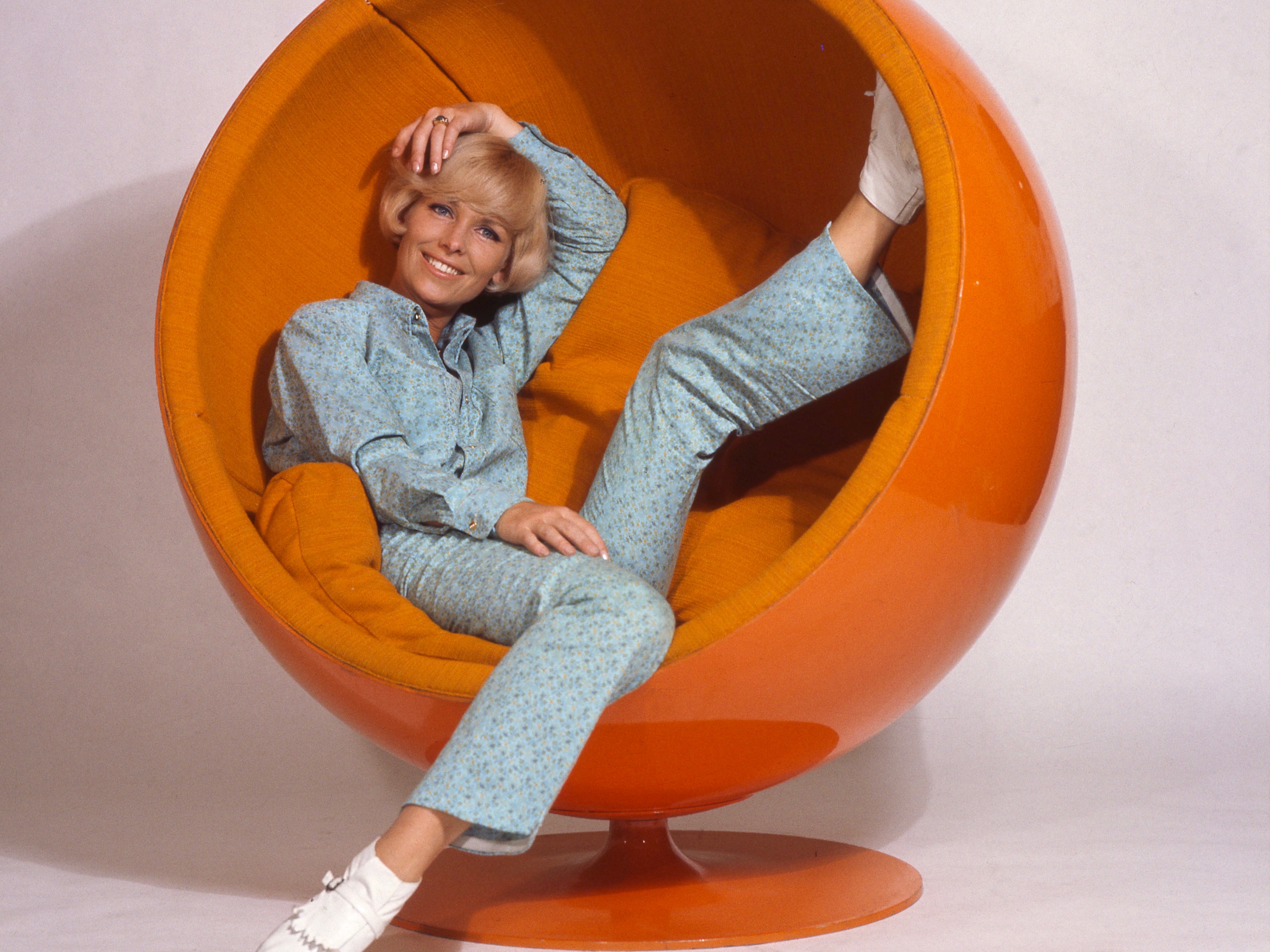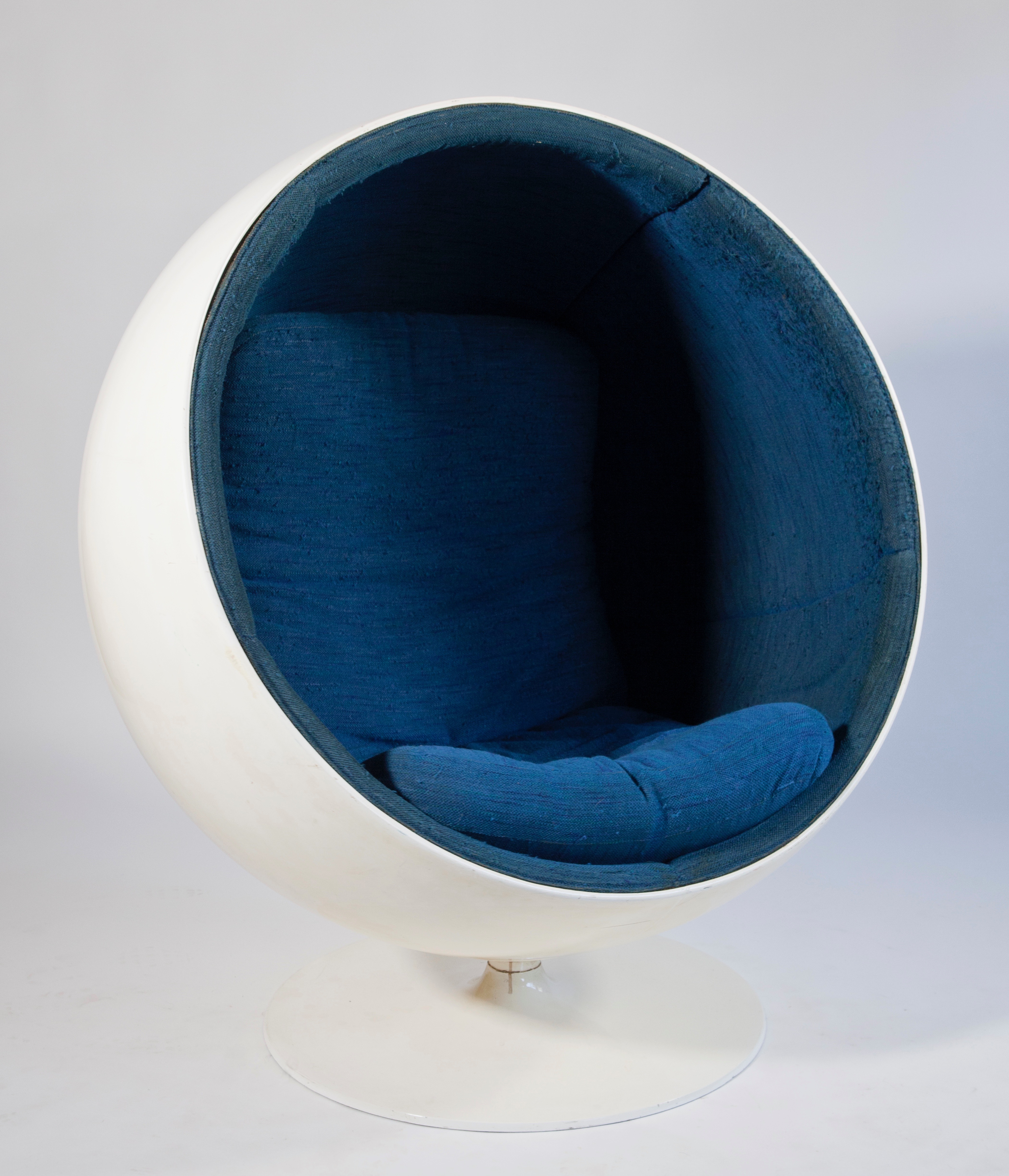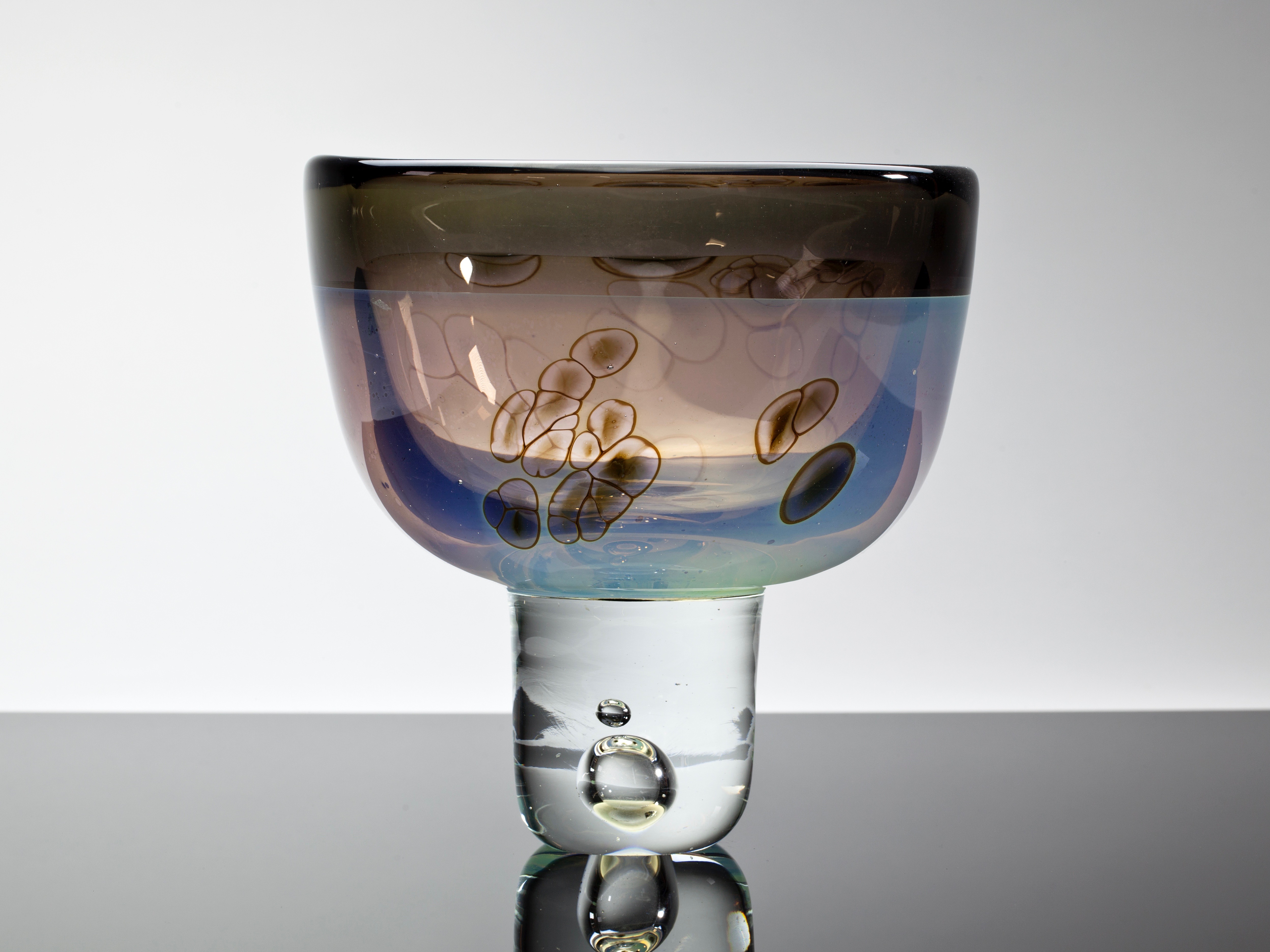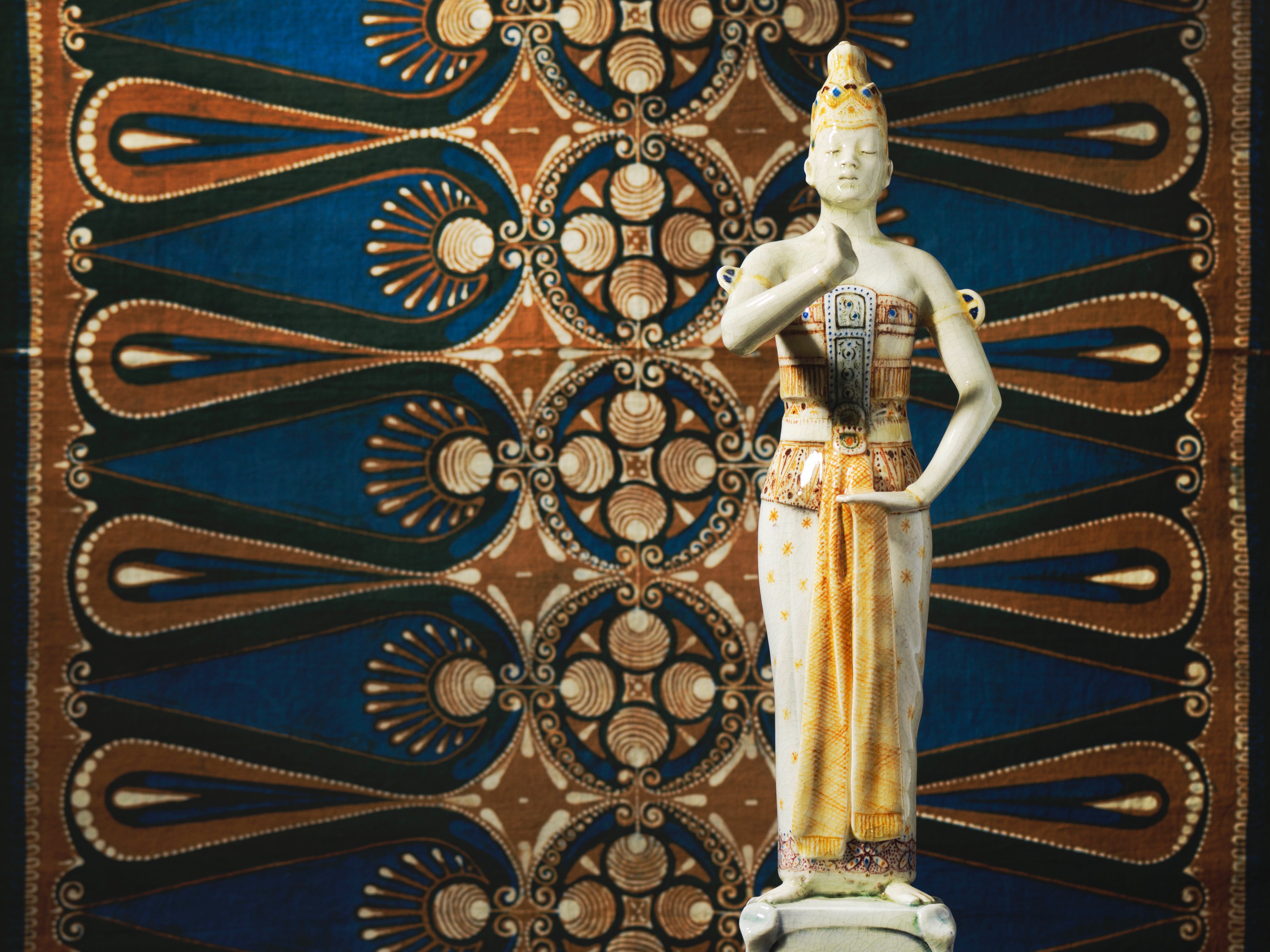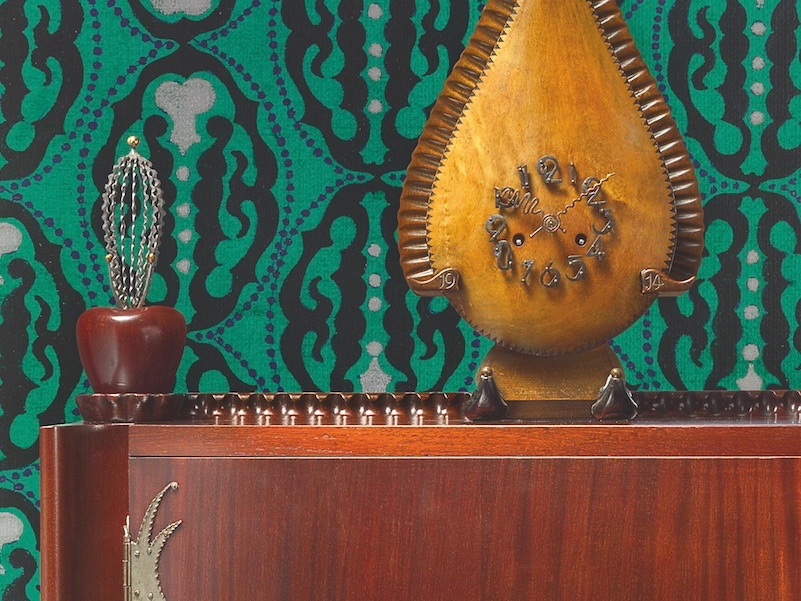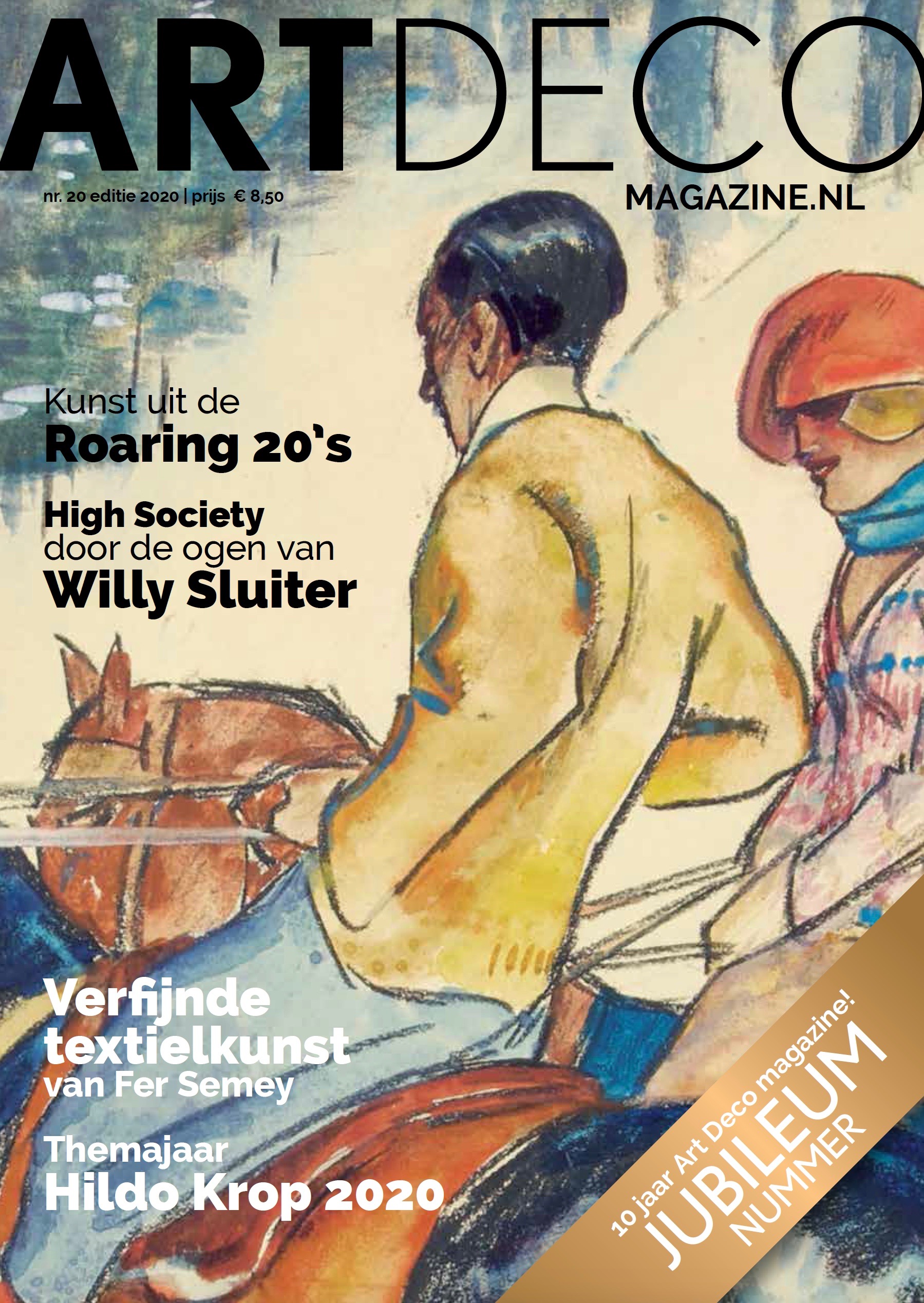Ball Chair by Eero Aarnio: Style icon from the Space Age
In his search for the possibilities of the new furniture material fibreglass, Eero Aarnio created the iconic Ball Chair. At first no manufacturer dared to make it, but in 1966 this Space Age-design became the star of the International Furniture Fair in Cologne. Kunstconsult has a beautiful Ball Chair with blue upholstery in the sales collection. From 9 June to 11 November 2018 this chair can be seen in the exhibition Simply Scandinavian | Nordic design 1945-2017 at Textielmuseum in Tilburg.
Scandinavian design is the term used for the designs from Scandinavian countries which are influenced by modernism and the restrictions of the surrounding landscape. This type of design originates in the 1930s and is characteristic for the simple clean lines, functionality and a minimalistic use of materials. The international success of Scandinavian design started in the 1950s. This is due to the Triennales in Milan, where Scandinavian designers won several prices, but also the first extensive design exhibition ‘Scandinavian Design’ touring the United States from 1954-1957.
Scandinavian Furniture
The great popularity resulted in many export possibilities for Scandinavian furniture manufacturers. Businesses like Fredericia Stolefabrik, Republic of Fritz Hansen, Artek, Louis Poulsen and Carl Hansen & Son flourished in this time. Among them also Asko, original producer of the Ball chair. Akso already early on concentrated on the production of series, which resulted in the company becoming the largest furniture manufacturer in Finland. Even though the story of the design of the Ball Chair has been romanticized as the search of Akso for an innovative chair, it was in fact Eero Aarnio himself who brought the chair to Asko.
Eero Aarnio
Eero Aarnio studied interior architecture and industrial design at the academy of applied arts in Helsinki from 1954-57. After graduating he worked several years for Asko under head designer Ilmari Tapiovaara (1914-1999). In 1962 he started his own design studio. In the beginning Aarnio designed furniture in the tradition of Scandinavian Design with natural materials. At heart however he was a proponent of innovation and experimented with different uses of materials, especially fibreglass. While shaping wood had its restrictions, fibreglass had great new possibilities. Aarnio said at the time: ‘Design means constant renewal, realignment, growth.’
The design of the Ball Chair
The design of the Ball Chair originated from Aarnio’s search for a new version of the classic chair theme. After making sketches he found out that the ball shape had the perfect form: because of its geometric shape it provided optimal strength with minimal use of material. While working out the design, Aarnio and his wife Pirko made drawings in a scale of 1:1 which they pinned on the wall. In this way he could imagine himself sitting in the chair and could thus determine the right size. The next step was making a prototype. With multiplex he created a ball shaped mould. On this he applied papier-mâché, layer by layer, until he achieved the desired form. After this the outside was laminated with fibreglass, finishing the outside shell of the chair. Unfortunately, the first result was not as perfect as expected. The construction was not strong enough to maintain its shape. ‘It looked like a misshaped potato’, according to Aarnio. As a solution he applied a metal ring to the opening of the ball so the prototype would hold its shape.
Space Age
After a few months looking in vain for a manufacturer, Aarnio got the opportunity to show his chair to Liro Santalahi, manager of the German branch of Asko. Santalahi saw the potential of the Ball Chair to make Asko known worldwide and enthusiastically proposed to present the chair at the International Furniture Fair in Cologne of 1966. This turned out to be an excellent move: The Ball Chair perfectly fitted the image of the Space Age era. Every significant person had to see the chair and the Ball Chair became the most photographed object at the fair. The orders were pouring in, already during the week of the fair from over thirty countries.
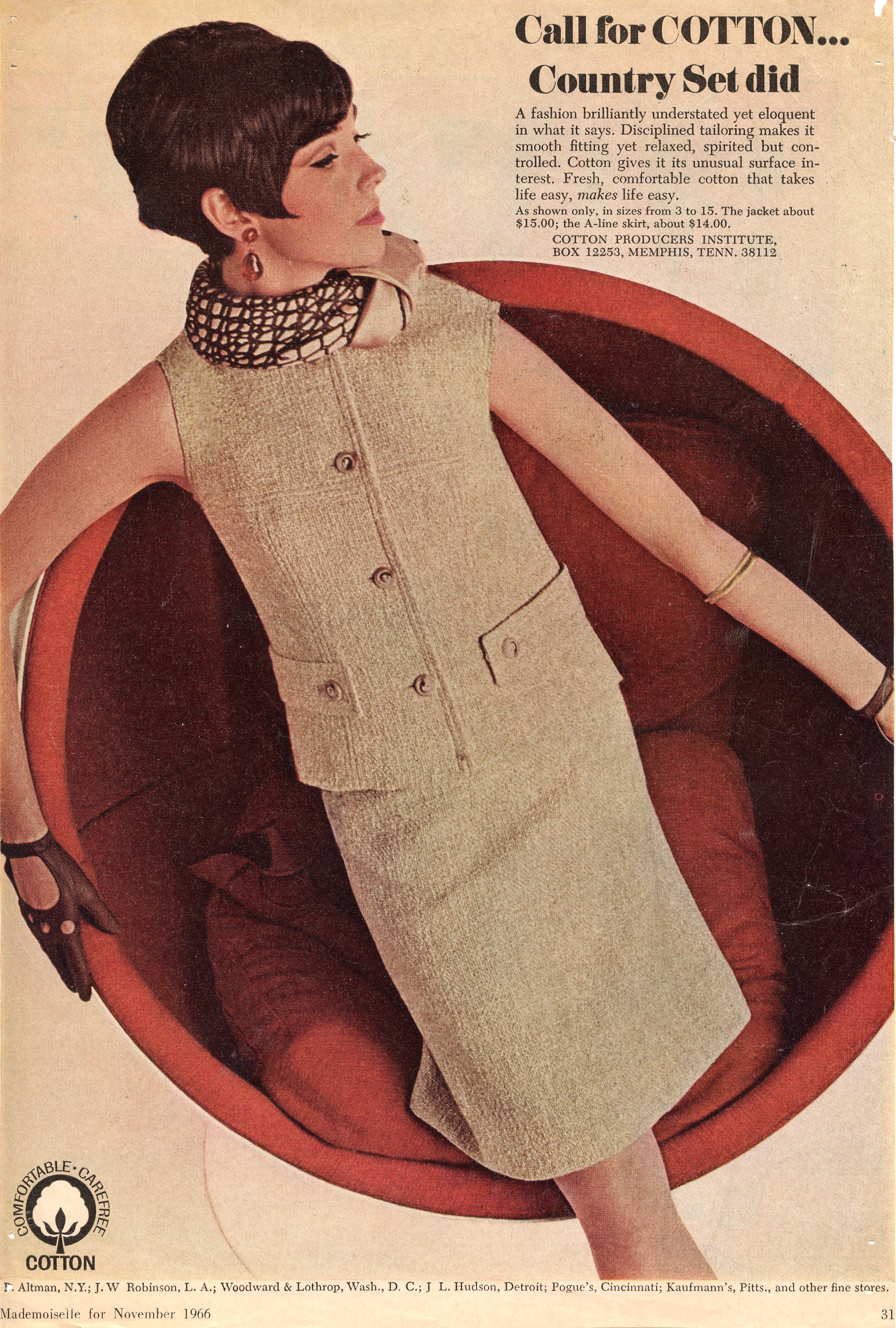
Antisocial leave-me-alone-chair
An article in the New York Times from 1966 called the Ball Chair the most antisocial, leave-me-alone-chair in Europe, fascinating more to men than women. The design was described as the ideal chair for the businessman who wants to seclude himself from all the noise at home and get some peace to read the newspaper.
The chair actually works like a room in a room; the person sitting in the chair is surrounded by a globe and thus isolated from the outside world. Both the colours of the lining on the inside and the outside fibreglass shell could be variated. And to solve the problem of seclusion, Aarnio added the option of installing a phone or speaker within the chair.
Oil crisis
The Ball Chair stayed in production with Akso until the oil crisis of 1973 which restricted the whole production of synthetic materials. Later the production was continued by Adelta. In 2008 Aarnio brought out a new version of the Ball Chair, the Ball Chair Audio. This version had added armrests and a modern audiosystem of Anthony Gall in which you could plug in your telephone, Ipod or laptop. Together with the original design this version is produced by Eero Aarnio Oirignals since 2016.
Round shapes
Even though the Ball Chair with its smooth plastic appearance appears to be out of place in the Scandinavian Design tradition of the 50s, the design at the same time still fits in because of its shape and function. The perfect geometric globe shape elaborates on the organic shapes of the designs from the 50s. While wood limits curves, fibreglass completes them. One could say it is a natural use of an unnatural material.
The new design of Aarnio influenced the works of other Scandinavian designers. The Ovalia Egg Chair of Danish designer Henrik Thor-Larsen is for example derived from the Ball Chair. The idea of isolating space with a spherical shape also reached designers outside Scandinavia. An example of this is the Isolation Sphere of French designer Maurice-Claude Vidili from 1971.
Design classic
Thanks to the spherical shape of space satellites Sputnik and Echo, Aarnio’s chair became an icon of the Space Age Era and pop culture. For futuristic films as Moon Zero Two (1969) and the series The Prisoner (1967-1968) the chair became a prop. From the 90s onwards, it is often used to denote the 60s. Multiple museums have the Ball Chair in their collection, like MoMa in New York, the Vitra Design Museum in Weil am Rhein, Centre Georges Pompidou in Paris and the Stedelijk Museum in Amsterdam. The Ball Chair of the collection of Kunstconsult is on display this summer and fall at the Textielmuseum in Tilburg.
Exhibition
Simply Scandinavian | Nordic design 1945-2017, Textielmuseum, June 9 - November 11 2018.
Depicted work
The Ball Chair with the blue upholstery exhibited at the Textielmuseum is also part of the sales collection of Kunstconsult.
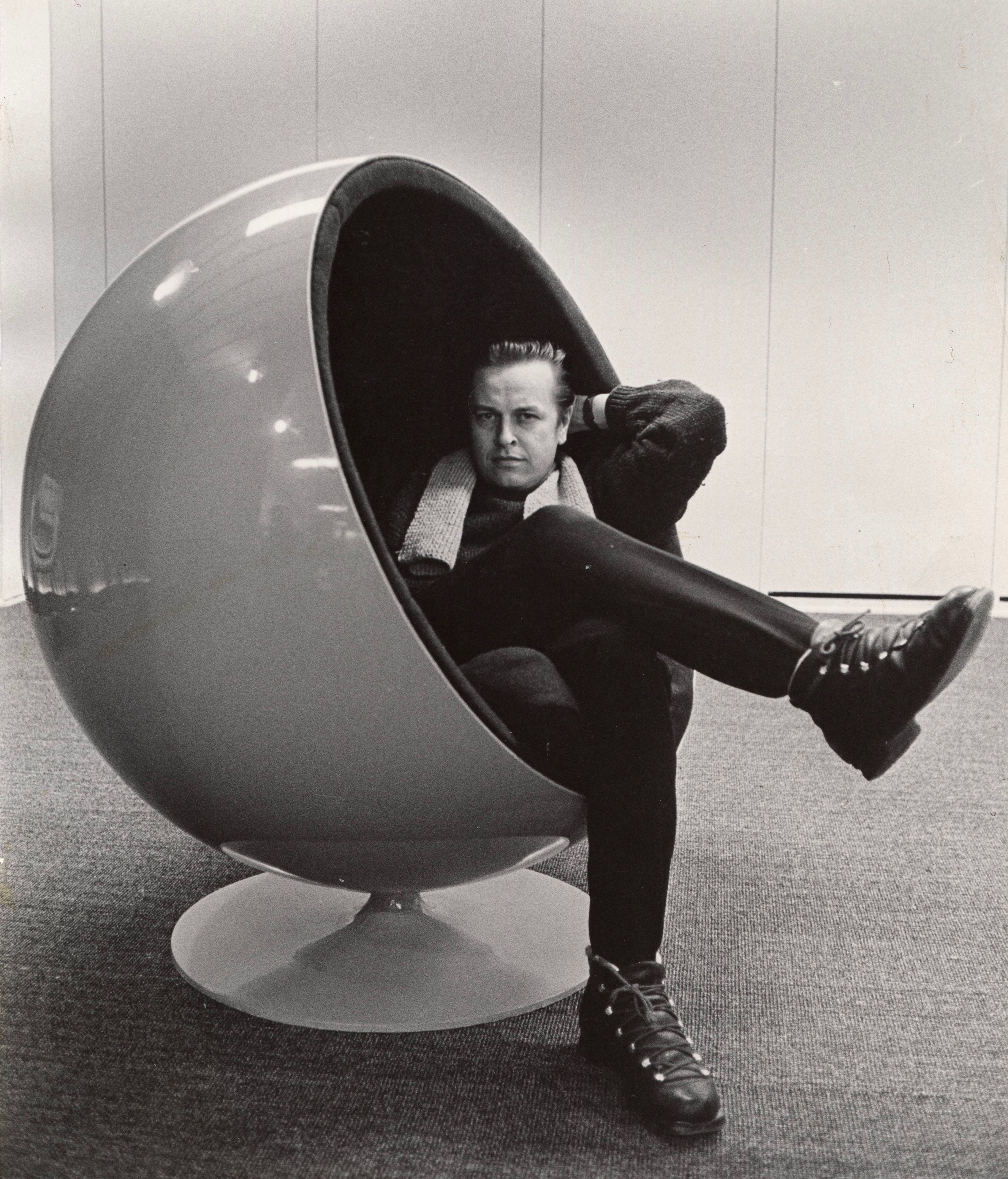
Text: Daan Ram. Main image: Erik Rijper, collection Kunstconsult – 20th century art | objects, historic images: courtesy of Eero Aarnio Archives.
© Kunstconsult – 20th century art | objects
Reproduction and distribution of this text is only allowed with correct reference.
